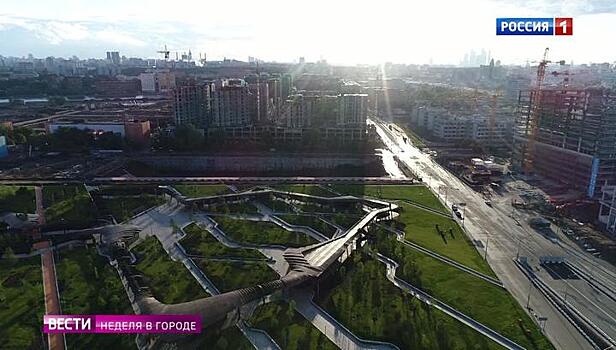Revive the Rust Belt: Moscow Outlines Ambitious Plan to Revitalize the Abandoned Industrial Zones
We will be talking about real estate that has long ceased to be the center of attention. Moscow's old industrial zones are vaguely reminiscent of the technical progress a century ago. Today, the capital has set an agenda for renewal — giant abandoned areas are being revived. A great example is the former ZIL plant: its land is being converted into a city within a city. Vladimir Starikov reports on the revitalization of Moscow's rust belt. The most ambitious transformation of Moscow's industrial zone is taking place on the land of the former ZIL plant. In an area of 420 acres — or 317 football fields — a whole city is being built in place of dilapidated factories: houses, schools, kindergartens, a concert hall, and a modern park have already been built here. The new owners care about the history of the place. According to the design of the Dutch architect, the park's central feature, a 1-km long footbridge, symbolizes the Likhachev Plant. Ivan Romanov, Director of Construction: "The architect named it "Caterpillar" initially, but when he explained his idea, he said the shape of the footbridge reminded him of a conveyor belt". The Soviet industrial giant, which produced buses, refrigerators, and its famous trucks, gradually ceased to operate after the collapse of the USSR. The collapse of ZIL was a tragedy for thousands of workers and a real social and psychological breakdown for the whole country. In Moscow, a huge part of the Danilov district turned into slums. It will take more than a year to bring the remaining concrete desert back to life. Ivan Romanov: "We are dealing with very complex and strong structures. We must understand that, during the Soviet era, everything was built contingent upon war and, of course, ensuring the structural strength was a difficult task for architectures but they enjoy such problems and solved them well". The project is extremely ambitious: 16 million square feet of real estate, the second largest transformation of an industrial zone in the world. The first five apartment buildings have already been built. In 5-6 years, more than 50,000 Muscovites will be able to live and work on the "uninhabited" island. ZILART is not the only example of revitalizing abandoned factories in the capital. A candy factory, which used to lure in Muscovites with the smell of chocolate, now attracts them with completely different smells: dozens of restaurants, shops, hair salons. After production was relocated, the building turned into a giant trade and exhibition arena. The factory walls and the name "Red October" have remained untouched. Everyone favors the brand. The Tsindel textile factory on the Derbenevskaya embankment was converted into a business center. Sergei Georgievsky, Urban Planner: "The idea is to reconstruct it in a manner that preserves Moscow's historic appearance, to ensure that the industrial architecture contributes to the city's historic fabric and at the same time functions according to modern standards and facilitates the needs of businesses and the people". Moscow is keeping pace with global trends: Enterprises are being relocated to the city limits, industrial zones are being revitalized. In New York, a park was built in place of an abandoned railway; in Copenhagen, the Islands Brygge neighborhood grew on the site of former warehouses — now, it's one of the city's most expensive areas. Today, the "rust belt" of industrial zones comprises 1/6th of the entire area of old Moscow. Sergei Georgievsky: "Until the 2000s, the industrial zones were frequently becoming zones of social tension: they were converted to warehouses, occupied by unstable businesses, and became centers of criminal activities". Industrial zones are located in convenient places: on embankments and near the central railroad. This is a unique resource that will allow construction without overloading the city. Moscow is transitioning from expanding its borders to rethinking within its existing ones. Sergey Sobyanin, Mayor of Moscow: "Earlier, the real estate infill in the old part of Moscow was occurring around the Moscow yards. Today, the general trend is the complex development of industrial areas". In the near future, the dismissive notion of "industrial zone" will lose its relevance: 45,000 acres will become recreation zones. In addition to being cleaned out, Moscow's "rust belt" will acquire new city landmarks. Vladimir Starikov, Andrei Razhin, Dmitry Malyshev, Aleksandr Muhin, Aida Gurasheva, Vesti, Moscow.
